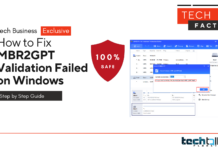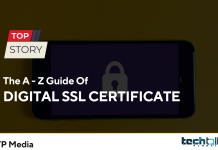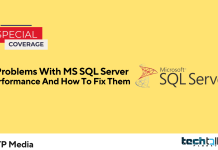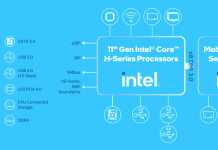Ransomware is a type of malicious software that hackers use to hold your data hostage and force you to pay a ransom in order to get your data back. Ransomware has been in the news a lot lately and has become an increasingly serious threat. In this blog post, we’ll explore how to protect your data from ransomware.
What is Ransomware?
Ransomware is malware that takes control of your computer and holds it hostage. According to the FBI, ransomware has increased significantly in 2017 and is projected to be one of the top cyber threats in 2018.
Ransomware works by encrypting your files and locking you out of your computer until you send money to the perpetrator. Your files and system data can then be decrypted, but the criminals can demand more money when you tell them you want the files decrypted. And you may never receive the decryption key.
This type of malware also spreads rapidly, and criminals can blackmail more people when the ransomware becomes more sophisticated.
Understand The Basics Of Ransomware And How It Works To Protect Your Data From Attack
Ransomware is a type of malware which blocks access to your computer until you pay a ransom. Ransomware attacks are commonly used by cybercriminals who break into your computer system through unpatched software vulnerabilities, such as “Flash” and “Java.”
After breaking into your system and encrypting all of your data, the cybercriminals demand a ransom in exchange for restoring access to your data. The ransom typically ranges from $50 – $500; however, in some cases, cybercriminals demand as much as $500,000.
The best protection against ransomware is prevention. Most ransomware attacks are successful because of unpatched software vulnerabilities in your computer. Simply by ensuring that your computers are up-to-date with the latest security patches, you will greatly reduce the possibility of becoming a victim of Ransomware.
Learn About Common Types Of Ransomware And How To Recognize Potential Threats
Ransomware is a type of malicious software designed to block access to a user’s data until a ransom is paid. It is one of the most prevalent cyber threats today, and its use has grown rapidly in recent years. Ransomware can be used to target both individuals and organizations, and there are several different types of ransomware. The most common types of ransomware are encrypting ransomware, locker ransomware, and browser locker ransomware.
Encrypting ransomware is a type of ransomware that encrypts files on the victim’s computer, making them inaccessible unless a ransom is paid. It is one of the most common types of ransomware and is often spread via email attachments, links, and malicious websites. Locker ransomware is a type of ransomware that prevents the user from logging in to their computer or accessing certain files or applications. Browser locker ransomware is a type of ransomware that prevents the user from accessing certain websites or services.
Data protection from ransomware attack is important, as ransomware can cause significant damage if it is not stopped. To protect against ransomware, users should keep all of their software up to date, use strong passwords, back up their data regularly, and only open emails and links from trusted sources. Additionally, users should be aware of the signs of a potential ransomware attack, such as unexpected pop-ups, strange messages, and unresponsive programs. By following these steps, users can help protect themselves from ransomware attacks.
Discover The Steps You Can Take To Protect Yourself And Your Data From A Ransomware Attack
Ransomware attacks are harmful – and on the rise. These attacks rely on deception and social engineering to infect computers with malware. Once a computer is infected with this malware, it will encrypt the hard drive of the computer, making it difficult to access. The computer will then display a ransom note asking the victim to pay the attacker a certain amount of money in exchange for the ability to regain access to their computer.
While ransomware attacks used to be viewed as a one-off incident, they are now becoming more common. A recent study showed that ransomware attacks have increased by over 250% in 2017!
If you are wondering how to protect yourself and your data against a ransomware attack, there are several steps that you should take. First, you should limit the number of connections that you have with uncontrolled networks. Limiting the number of connections that you have with uncontrolled networks will make it more difficult for cybercriminals to gain access to your computer.
If you regularly connect to public Wi-Fi networks, you should make it a point to avoid accessing your sensitive files. Public Wi-Fi networks are often unsecured, meaning cybercriminals can easily gain access to the network and spy on what you are doing.
Learn About The Importance Of Data Protection From Ransomware Attacks And Why It Matters
Data protection from Ransomware attacks is of utmost importance in today’s digital world. Ransomware is a malicious software that encrypts data, rendering it inaccessible to the user. Even with the best security measures, it is nearly impossible to prevent such attacks from taking place. That is why data protection is key. Data protection entails the creation of secure backups, as well as the implementation of security policies and procedures that protect a company’s data from cyber threats.
Data protection from Ransomware attacks involves a combination of technical and procedural measures. On the technical side, businesses should use secure and up-to-date anti-virus software and firewalls to detect and prevent malicious activity. Companies should also use encryption to protect sensitive data and ensure that only authorized personnel can access it. On the procedural side, businesses should implement policies that require users to create strong passwords and use secure networks. Additionally, they should regularly monitor and review their system for signs of malicious activity.
Data protection from Ransomware attacks is not just important for protecting a company’s data, but for avoiding the costly consequences of an attack. A successful attack can lead to the loss of confidential data, financial damage, and disruption of operations. By protecting data from Ransomware attacks, businesses can save money and prevent the potential damage that could occur from an attack.
Find Out The Best Practices For Safeguarding Your Data From Potential Ransomware Attacks
Ransomware attacks are on the rise. These attacks are getting more and more sophisticated, and the chances of you suffering from one are increasing every day. One of the best ways to protect yourself from these attacks is to practice good data security. Find out what those best practices are by reading this blog.
The Impact Of Ransomware Attack
Ransomware, a form of malicious software, is targeting businesses and consumers worldwide. This form of cyber attack holds your computer data hostage through encryption until you agree to pay the required sum of money.
Recent reports suggest that the vending machine industry is being targeted with Ransomware. A study by Coinstar found that 40% of independent operators were hit with Ransomware.
Types And Forms Of Ransomware.
There are two types of ransomware: data extortion and crypto-ransomware.
Data extortion is simply encrypting data, meaning you cannot access your data until you pay a ransom. It’s not any different from crypto-ransomware, except that it takes longer for you to know that your data has been encrypted. It also leaves many more options for you, including using the backups that you might have.
Crypto-ransomware is infecting data. Its purpose is stealing data from businesses and encrypting it. Just like crypto-ransomware, crypto-extortion will also encrypt your data.
Understand the different types of ransomware and their associated risks
Having a strong data protection plan is paramount to preventing a ransomware attack. Ransomware is a form of malware which blocks access to a user’s data by encrypting it, and only unlocks it after the user pays a ransom fee. Ransomware is typically spread via phishing emails, malicious websites, or through malicious software. It is important to understand the different types of ransomware and their associated risks in order to protect your data from an attack.
The most common type of ransomware is known as a “crypto-ransomware”, which encrypts files and folders on a user’s computer, making them inaccessible. Once the ransomware is installed, the attacker will typically set a ransom fee, which is only paid after the user pays the fee in the form of bitcoin or other cryptocurrencies. Once the ransom is paid, the attacker will provide a decryption key for the user’s files. It is important to note that there is no guarantee that the attacker will actually provide the decryption key, so it is important to back up your data before attempting to pay the ransom.
Another type of ransomware is known as a “locker-ransomware”, which locks down the user’s computer completely, preventing them from accessing any of their data or applications. The attacker will typically set a ransom fee, but will not provide a decryption key. In this case, the user’s only option is to either pay the ransom or to completely reinstall the operating system and all of their applications in order to regain access to their data.
In order to protect your data from a ransomware attack, it is important to have a strong data protection plan in place. This includes regularly backing up your data to an external source, using anti-virus software and a firewall to protect against malicious software, and avoiding clicking on suspicious emails or links.
Learn The Various Forms Ransomware Can Take To Target Your Data
Ransomware is a type of malicious software designed to encrypt data on the computers of targeted users. In order to access the data, the user must pay the ransom fee to the hacker behind the attack. The attacker demands the ransom in an untraceable currency, such as bitcoins, and fees increase over time.
Ransomware Attacks Can Come In Various Forms, Including The Following:
Lockscreen ransomware: This type of ransomware requires the user’s credentials in order to unlock the affected computer. Once the attacker has access, the victim cannot make any changes to their computers – and the attacker can lock them out altogether.
File-system ransomware: This type of ransomware targets and encrypts the files on the computer. The victim can typically view these files, but they cannot access them. They can restore these files by paying the ransom fee, or they can restore them from a backup. However, attackers often delete backup files so that users must pay up.
Screen locker ransomware: This type of ransomware locks the user’s screen, preventing them from accessing their computers. They can typically unlock their screens by paying the ransom fee, or they can restore the computers from a backup. However, attackers often delete backup files so that users must pay up.
These attacks have become increasingly sophisticated, with attackers targeting mobile devices as well as computers. While ransomware attacks were once largely limited to windows computers, they have now expanded beyond desktop and laptop computers to attack smartphones and tablets.
Ransomware attacks have become increasingly sophisticated, with attackers targeting mobile devices as well as computers. While ransomware attacks were once largely limited to windows computers, they have now expanded beyond desktop and laptop computers to attack smartphones and tablets.
Identify The Best Strategies For Data Protection From Ransomware Attack
Data protection is one of the most important steps you can take to avoid getting infected with ransomware attacks. Businesses and individuals around the world are attacked by hackers every day, and these hackers hold their data for ransom. In fact, ransomware accounts for nearly one third of all cyber attacks today.
One of the best ways to protect your data from criminals is to back up your data. If all of your important business files are backed up, you won’t have to pay any ransom. In addition, malware could infect your computer, but your files can still be accessed and restored.
The best way to backup your data is to invest in a cloud storage service. These services give you the ability to back up and restore your data from any device, from anywhere in the world. In addition, cloud services encrypt your data, keeping your information secure at all times.
Discover The Importance Of Having An Effective Backup System In Place
Having an effective backup system in place is essential for the protection of your data from the threat of ransomware attack. An effective backup system ensures that your important data is up-to-date and secure. It enables you to restore your data in the event of an attack, so you can continue to operate without disruption.
Ransomware attackers search for vulnerable systems and then use malicious software to encrypt data and demand payment for its return. Without an effective backup system, victims are often forced to pay the ransom in order to regain access to their data. By having an effective backup system in place, you can avoid this situation by restoring your data quickly and easily.
To ensure your data is secure and protected, you should ensure that your backup system has a reliable and secure platform, such as the cloud, which is regularly updated and monitored. You should also regularly test your backups to ensure they are working correctly and are up-to-date. This will ensure that you have the latest version of your data in the event that your system is attacked by ransomware.
Explore The Different Tools And Solutions Available For Ransomware Prevention And Mitigation
Ransomware is a serious threat, and most businesses suffer an attack at some point. The attacks cost billions of dollars each year and result in the loss of valuable data.
The threat of a ransomware attack increases every year, and you need to ensure you have the right measures and procedures in place to prevent an attack.
Understanding How Ransomware Works and What it Targets
Ransomware is malicious software (malware) that cybercriminals use to extort money from victims. It encrypts the victim’s files and then demands a ransom to unencrypt the files. This ransom is usually paid in Bitcoins, a cryptocurrency.
Ransomware attacks are growing in frequency and sophistication. In 2017, over 4,000 ransomware attacks were reported worldwide, costing victims over $325 million.1 However, many victims pay, rather than risk losing their data.
Educating Yourself On The Common Signs Of A Ransomware Attack
Data protection from ransomware attacks is critical for all businesses and organizations. To protect yourself from the malicious intent of ransomware attackers, it is important to be educated on the common signs of a ransomware attack. When ransomware attacks occur, the attacker will usually encrypt files on the target computer, preventing access to them unless a ransom payment is made. Additionally, the attacker may also launch a denial of service attack, blocking access to the target computer or network.
It is important to look out for suspicious activity on your computers such as unexpected changes to system settings, or the appearance of unfamiliar programs or messages. Another sign of a ransomware attack is an increase in the number of pop-up windows, especially those related to security or privacy. Additionally, users may notice that their files have suddenly been locked and inaccessible.
To protect data from ransomware attackers, businesses and organizations should invest in up-to-date security measures such as strong firewalls, regular malware scans and automated backups. They should also regularly educate their staff on proper computer security measures, such as avoiding suspicious links and websites and not clicking on unknown links or attachments from emails. By taking these steps, businesses and organizations can drastically reduce the risk of a ransomware attack and protect their data from malicious attackers.
Taking Proactive Measures To Protect Your Data From Ransomware
Ransomware attacks are one of the most disruptive cyber security threats out there. A ransomware attack essentially locks you out of your own computer, preventing you from doing anything on the device. The only way to regain control is by paying the attacker. These attacks are incredibly common, and they have become one of the biggest cyber security issues in recent years.
In 2016, ransomware attacks cost companies more than $1 billion. However, more than half of those companies didn’t have data recovery plans in place. The consequences of not being prepared can be devastating.
The best way to protect yourself from an attack is by implementing a data recovery plan in place. A data recovery plan will help you protect your data from ransomware, allowing you to regain control of your device without paying for services.
Here are some tips that will help you protect your data from ransomware attacks:
Back up your data on a regular basis: One of the most important things you have to do to protect yourself from an attack is by backing up your data. Regular backups ensure that you don’t have to pay any money to recover your lost data. Ideally, you should back your data up on a regular basis; this ensures that you can recover your lost data quickly.
Use a reliable encryption software: Encryption software will ensure that your data is secure even if the ransomware attack is successful. Some types of encryption software are available for free, while others are paid. However, some types of software are effective, while others aren’t. In most cases, you should be willing to pay a small fee to get reliable encryption services.
Implement a data recovery plan: Even if you do everything right, a ransomware attack could still occur. To be safe, you need your data recovery plan. A data recovery plan will help you regain control of your device, and more importantly, without losing any data.
Implementing The Latest Security Solutions And Best Practices To Prevent A Ransomware Attack
Ransomware is one of the most malicious forms of cyberattacks, and it can cause significant disruption and financial loss. It affects organizations of all sizes, from small businesses to large enterprises. To protect their data and systems from ransomware, organizations must implement the latest security solutions and best practices.
Data protection from ransomware attack is essential for any organization. Organizations should implement comprehensive security solutions, such as firewalls, antivirus software, and intrusion detection systems to protect their systems from malicious attacks. Additionally, organizations should ensure that all applications, data, and networks are regularly backed up in case of a ransomware attack. This helps to ensure that the organization can recover their data quickly and securely if the attack is successful. Furthermore, organizations should regularly monitor their systems for any suspicious activity and respond quickly to any alerts.
Finally, organizations should educate their employees on the importance of cybersecurity and best practices. This includes teaching employees how to recognize potential phishing emails and suspicious websites. Additionally, they should be educated on how to use two-factor authentication and other security measures to protect their data. By implementing the latest security solutions and best practices, organizations can greatly reduce the likelihood of a successful ransomware attack.
5 Companies Who Are Providing Best Protection Services Against Ransomware Attacks In USA
Morphisec
The proactive endpoint protection technology from Morphisec, which is powered by Moving Target Defense, creates a zero-trust execution environment for your applications. With regard to the most cutting-edge dangers to the company, such as APTs, file-based malware, zero-days, ransomware, file-less attacks, and web-borne exploits, this proactively develops a prevent-first posture.
This comprehensive endpoint security solution is simple, highly efficient, and inexpensive to implement into an organization’s current security infrastructure, creating a technology stack that is really disruptive to the current cybersecurity model. It was established in 2014 and has its main office in Israel’s HaDarom.
HYAS
HYAS, a First Nations name that means “big and mighty,” is the foremost expert on the communication to and from cyber enemy infrastructure. HYAS has built what is conceivably the biggest data lake in the world of cyberattacker infrastructure, complete with unmatched domain-based intelligence.
HYAS uses its expertise in infrastructure to advance cybersecurity by a generation. HYAS offers the first security solution in the market that seamlessly integrates into an organization’s current security technology stack in order to proactively detect and mitigate cyber risks before assaults start and to pinpoint the attack infrastructure.
Carbon Black
Leading vendor of next-generation endpoint security is Carbon Black (NASDAQ: CBLK). Over 4,300 clients are served by Carbon Black globally, including 35 Fortune 100 companies.
Application control, endpoint detection and response (EDR), and next-generation antivirus are just a few of the endpoint security categories that Carbon Black has invented as a cybersecurity innovation (NGAV). The Cb Predictive Security Cloud, a big data and analytics cloud platform from Carbon Black, enables users to protect against the most cutting-edge cyberthreats, such as malware, ransomware, and non-malware attacks.
Continuity Software
The organization, which was established in 2005 by a group of storage and data protection specialists, is dedicated to a single goal: giving enterprise security and IT professionals the cyber resilience solution they require to ensure that crucial data is continuously protected.
ContinuityTM is the only solution provider that helps businesses protect their data by securing their storage systems, both on-premises and in the cloud, in light of the surge in cybersecurity threats.
By adding an extra layer of security that prevents attackers from breaching your storage systems and accessing the vast amount of data kept there, Continuity’s StorageGuard supplements existing data-protection solutions.
60% of the major US institutions can rest easy knowing that their storage systems can withstand ransomware and other data-targeting attacks thanks to ContinuityTM.
BitDam
BitDam Cyber Security Enables Businesses To Cooperate Safely By Blocking Sophisticated Content-Borne Assaults Across All Organizational Communication Channels. BitDam, Which Was Created By Top-Tier Intelligence Specialists, Prevents Malware From Starting Up, Pre-Delivery, Hardware And Software Exploits, Ransomware, Phishing, N-Day, And Zero-Day Assaults Contained In Any Kind Of File Or URL.
Enterprise Communications Are Safe To Click On Thanks To BitDam’s Greatest Attack Detection Rates And Fastest Delivery Of Security From Today’s Email-Borne Assaults. BitDam Is A Privately Held Company With Offices On The US East Coast And A Tel Aviv Headquarters.
Conclusion
Ransomware has become one of the most prevalent types of malware, so it’s important to protect yourself from it. In addition to installing anti-virus and anti-malware software, there are a number of steps you can take to keep yourself and your data safe. I hope this article will give you the information you need to keep your data safe from ransomware. Let me know in the comments below which methods worked best for you.
























































